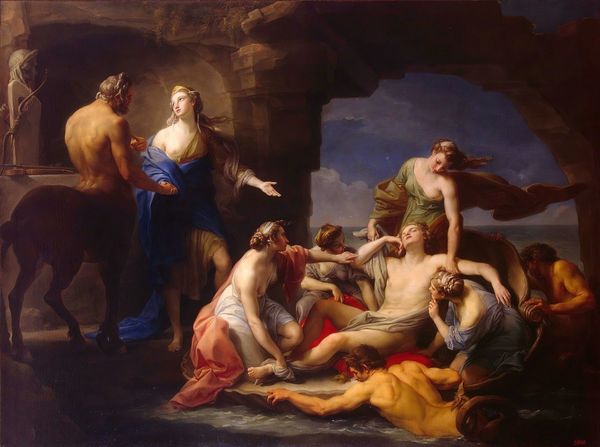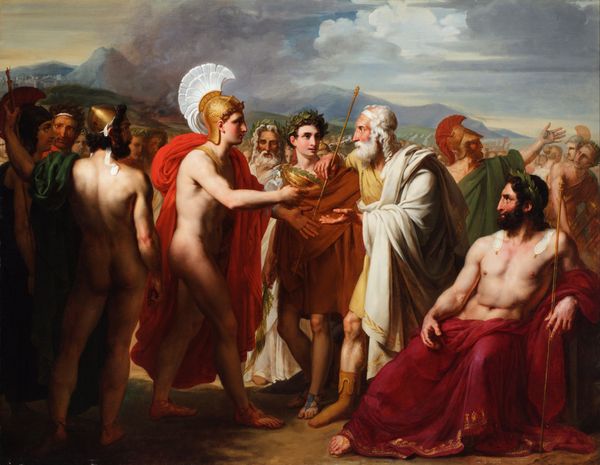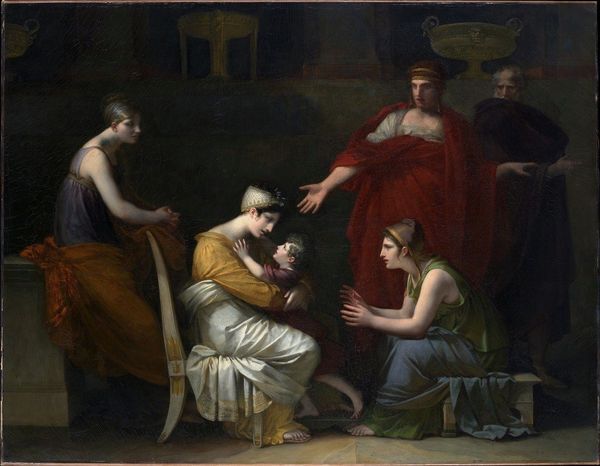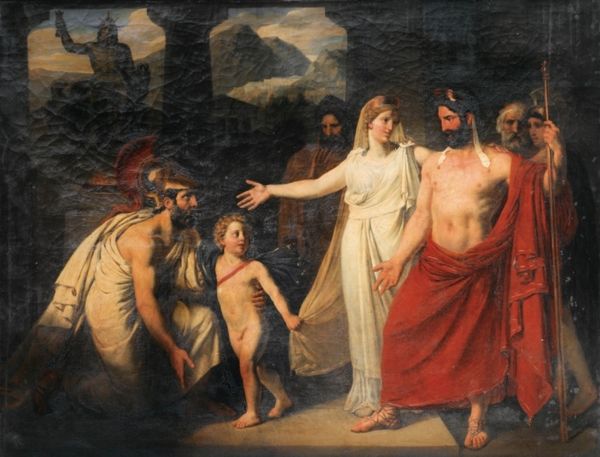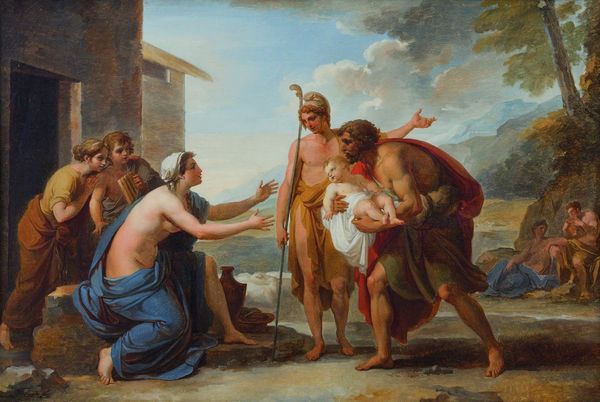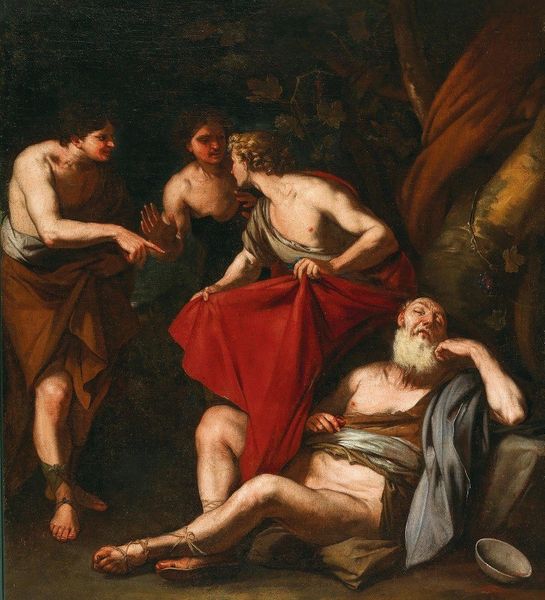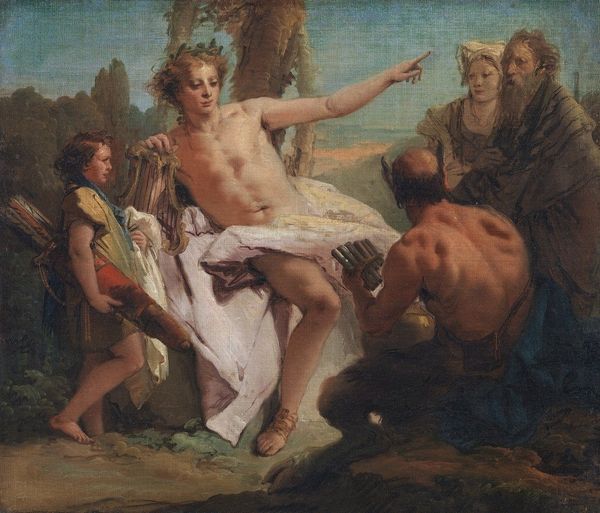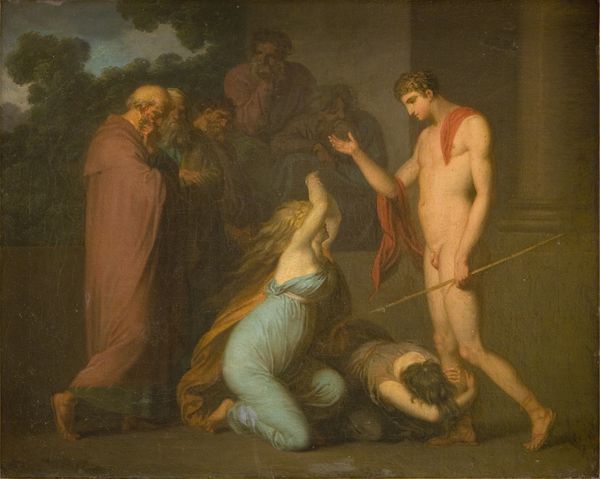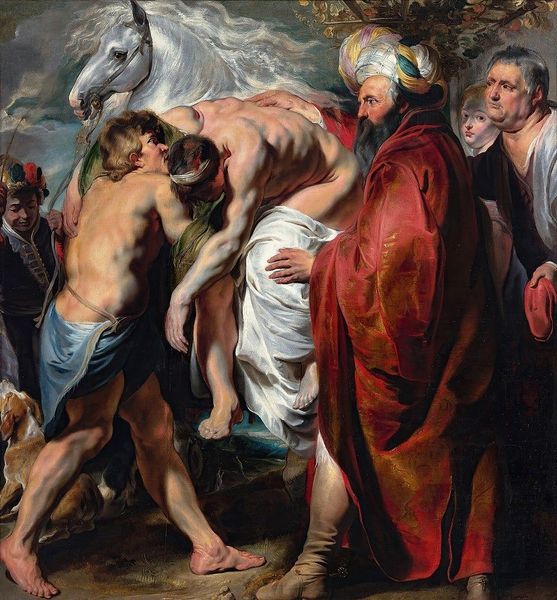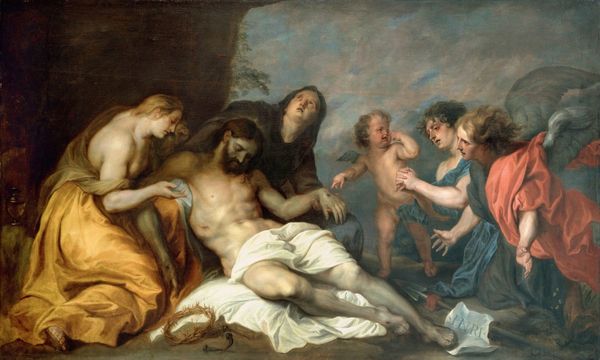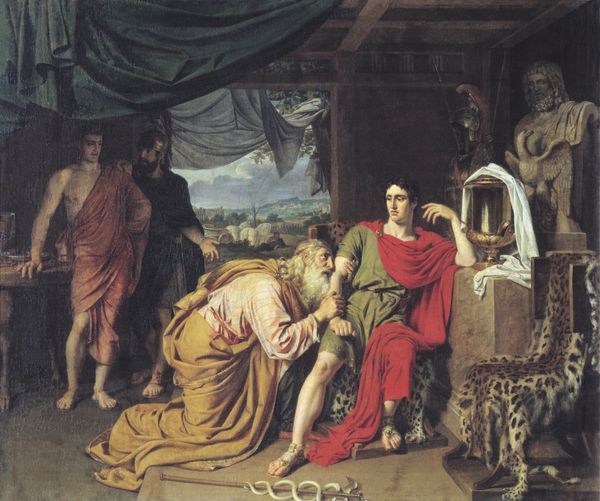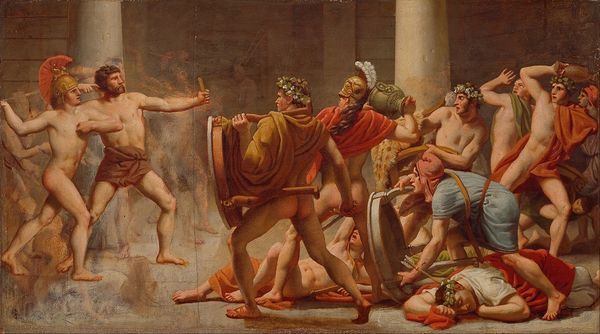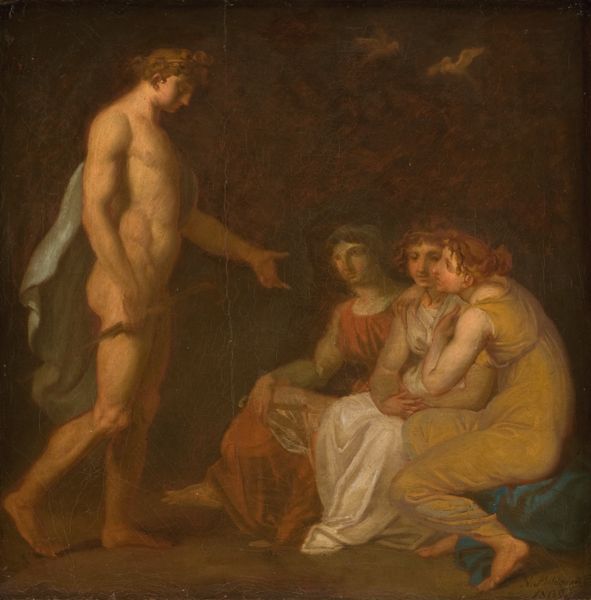
Jacob Recognizing the Robe of His Son Joseph c. 1791
0:00
0:00
painting, oil-paint, oil-on-canvas
#
portrait
#
allegory
#
narrative-art
#
painting
#
oil-paint
#
classical-realism
#
history-painting
#
academic-art
#
oil-on-canvas
#
realism
Dimensions: 61 x 52 1/2 x 1 1/4 in. (154.94 x 133.35 x 3.18 cm) (canvas)72 1/2 × 64 × 3 3/4 in. (184.15 × 162.56 × 9.53 cm) (outer frame)
Copyright: Public Domain
Editor: Here we have Jean-Jacques Forty's "Jacob Recognizing the Robe of His Son Joseph," painted around 1791 using oil on canvas. The scene feels intensely dramatic, heightened by the expressions and the stark lighting. What is your interpretation of the political implications of a painting with religious themes during the end of the 18th century in France? Curator: It's essential to remember that art never exists in a vacuum. The French Revolution was brewing, challenging the existing power structures, and the aristocracy. This painting, with its narrative of deception and loss within a family, subtly reflects the anxieties of a society undergoing radical change. How do you think its scale plays a role in its cultural reception? Editor: Given its size, I'd imagine it was made for public display, which then influences how its story gets shared among wider audiences. Curator: Precisely! Paintings displayed publicly like this become powerful tools. Forty’s dramatic depiction, echoing classical ideals but depicting familial struggle, subtly questions established authorities. Note how Forty chose this specific biblical scene, heavy with patriarchal authority figures challenged by a plot for control and deceit. Editor: So it’s more than just a Bible story; it’s a commentary on contemporary French society? Curator: Absolutely. The political undertones were designed to speak to viewers on multiple levels. Does recognizing that contextual framing adjust your perception of it? Editor: It really does! I was focused on the emotional aspect of the artwork at first. Seeing the potential critique of societal structure of the time really blows my mind. Curator: Exactly, by situating the work within its socio-political setting, we see how art served as both a reflection of its moment and as an implicit instrument within it.
Comments
No comments
Be the first to comment and join the conversation on the ultimate creative platform.
